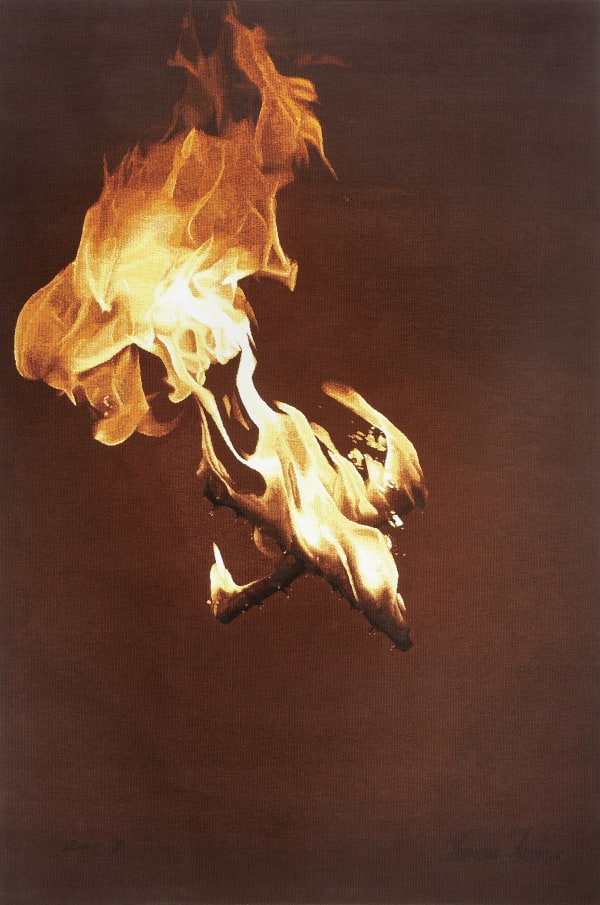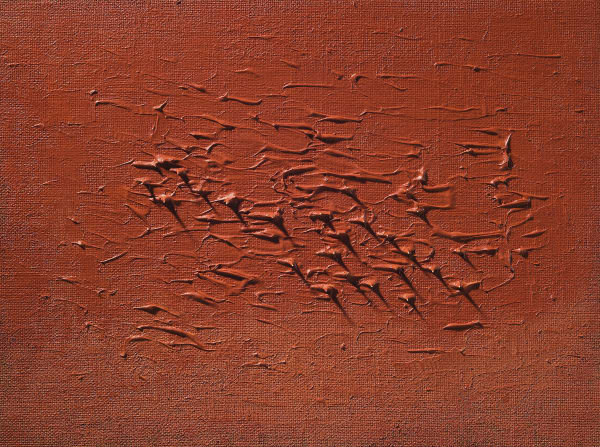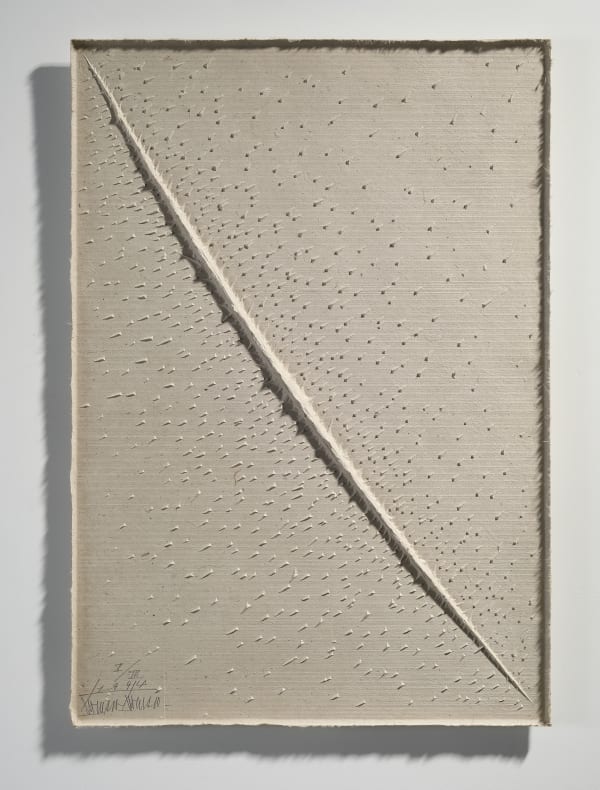Gallery Baton is pleased to present In Lieu of Higher Ground, a group exhibition by three Korean contemporary artists, Song Burnsoo, Park Suk Won, and Park Jang Nyun, from 30th January to 29th February, 2020. The exhibition attempts to highlight the life-long commitment to creation by three masters who have a great influence upon the process of establishing the current hybrid cultural-geography of ‘Korean contemporary art’ from its beginning period to the present phase which conveys diversified identities and zeitgeist. The title, In Lieu of Higher Ground, implies the remarkable achievement of the three artists whose life consequently became their artistic trajectories by embracing an attitude of seeking unity of the physical and the spiritual. As they have dedicated their entire life to investigating into aesthetic accomplishment and manifestation of their own creative world instead of chasing after personal fame and materialistic advancement, we dare to speak that they have silently but stubbornly broadened the scope of their artistic territories by exploring unknown realms from a perspective of a seeker rather than trying to set up another monument on the existing land—Korean contemporary art.
Song Burnsoo (b. 1943) displays his late paintings and a large-scale tapestry produced from the early 1990s in which his religious introspection into existence as not only an artist but a human being progressed into his works of art. At that time, his techniques began to show radical growth after consistent efforts since he tried to switch his major interest from prints to tapestries in the 1980s. The central subjects of the works produced in this period were the Cross and the thorns—the Christian icons symbolizing the Passion of Christ and the Atonement. Being delicately and deftly dealt with by the artist, the colourful strands of thick yarn create particular little ridges which produce a dramatic effect allowing spectators to earnestly contemplate on connotations of the directed images. His fascination with the symbolic significance of the thorns emerged as new forms of expression in paintings of the 2000s; the assemblage of thorn-shaped reliefs generates a keen sense of tension as though they penetrated the actual surface of the canvas. In addition, it encourages the audience to appreciate multi-layered psychological states such as pain and sacrifice or despair and hope with a more tangible approach.
Park Suk Won (b. 1941) presents wooden sculptures produced in the 1970–1980s when he was successfully establishing his practice’s keyword and theme—‘Accumulation’. In this period, Park paid attention to authentic properties of natural objects such as trees and rocks and he combined artificial elements and rhythm with the properties to focus on ‘visibility of reduction’: revealing natural features inherent in the properties. His Mutation-Relation series demonstrates that wooden figures carefully cut in particular patterns several times still maintain their original colours and grains. In this context, the wood operates as a mediator underlining sculptural symbols stemmed from certain shapes by passively accepting the artist’s intended physical alterations including wavy shapes, layered diagonal lines, or junctions reminiscent of human joints. Despite these interventions, the wood remains as a plain material for sculpture. It is why the artist has actively employed the medium to construct and develop his concept of ‘Accumulation’.
This exhibition introduces major paintings which clearly suggest each piece’s temporal characteristics by Park Jang Nyun (1937–2009), who occupied himself with representing shapes of hemp cloth with a hyper-realistic manner. One of his 1960s works depicting deep-colored faces building borders and floating is a fine example of Art Informel. Since then, Park had concentrated on describing various different appearances of the hemp cloth regardless of its status as a material. It is intriguing that hyper-realism referring to an extremely detailed description of objects does not practically dominate his paintings, as the object of representation, the sheets of hemp in this case, still keeps its distance from the figurative domain in spite of its visual lucidity. Thus, his approach seems to accurately represent the surface of an object, while it deliberately avoids a theoretical interpretation of it. In his practice, creases which distinguish one work from another play a role in his unique visual language. They ultimately indicate the artist’s intention to provide his practice a notional connection to ‘illusions’ by reminding us of the creases’ paradoxical condition in the painting which has to stay untouched but makes the rest of their background painted for its own presence.
The early wooden sculptures of Park Suk Won, the tapestry and late paintings of Song Burnsoo who are the members of the Korean Avant Garde Association, and Park Jang Nyun’s paintings of hemp cloth are presented in the exhibition. The works of three masters evoke an uncanny impression as if the exhibition in the 1970s, Ecole de Séoul, was reoccurring. At the same time, the practice of the senior artists who have been sincere and passionate about artistic ideals throughout their entire life will offer the viewers an opportunity to encounter that contemporary values transcending time and space of their works are still valid.
-
 Song BurnsooKnow Yourself, 2007
Song BurnsooKnow Yourself, 2007 -
 Song BurnsooPossibility, 2006
Song BurnsooPossibility, 2006 -
 Song BurnsooPossibility, 2006
Song BurnsooPossibility, 2006 -
 Park Suk WonAccumulation 8525, 1984
Park Suk WonAccumulation 8525, 1984 -
 Park Jang NyunHemp Cloth 89-1, 1989
Park Jang NyunHemp Cloth 89-1, 1989 -
 Song BurnsooPossibility, 2006
Song BurnsooPossibility, 2006 -
 Park Jang NyunHemp Cloth 77-28, 1977
Park Jang NyunHemp Cloth 77-28, 1977 -
 Song BurnsooPossibility, 2006
Song BurnsooPossibility, 2006 -
 Song BurnsooThorn, 1994
Song BurnsooThorn, 1994 -
 Park Suk WonMutation-Pair 7918, 1978
Park Suk WonMutation-Pair 7918, 1978 -
 Park Jang NyunHemp Cloth 88-16, 1988
Park Jang NyunHemp Cloth 88-16, 1988 -
 Park Suk WonMutation-Relation 7726, 1977
Park Suk WonMutation-Relation 7726, 1977 -
 Park Jang NyunHemp Cloth 97-12, 1997
Park Jang NyunHemp Cloth 97-12, 1997 -
 Park Jang NyunHemp Cloth 86-30, 1986
Park Jang NyunHemp Cloth 86-30, 1986 -
 Park Jang Nyun74 Response B, 1974
Park Jang Nyun74 Response B, 1974

















